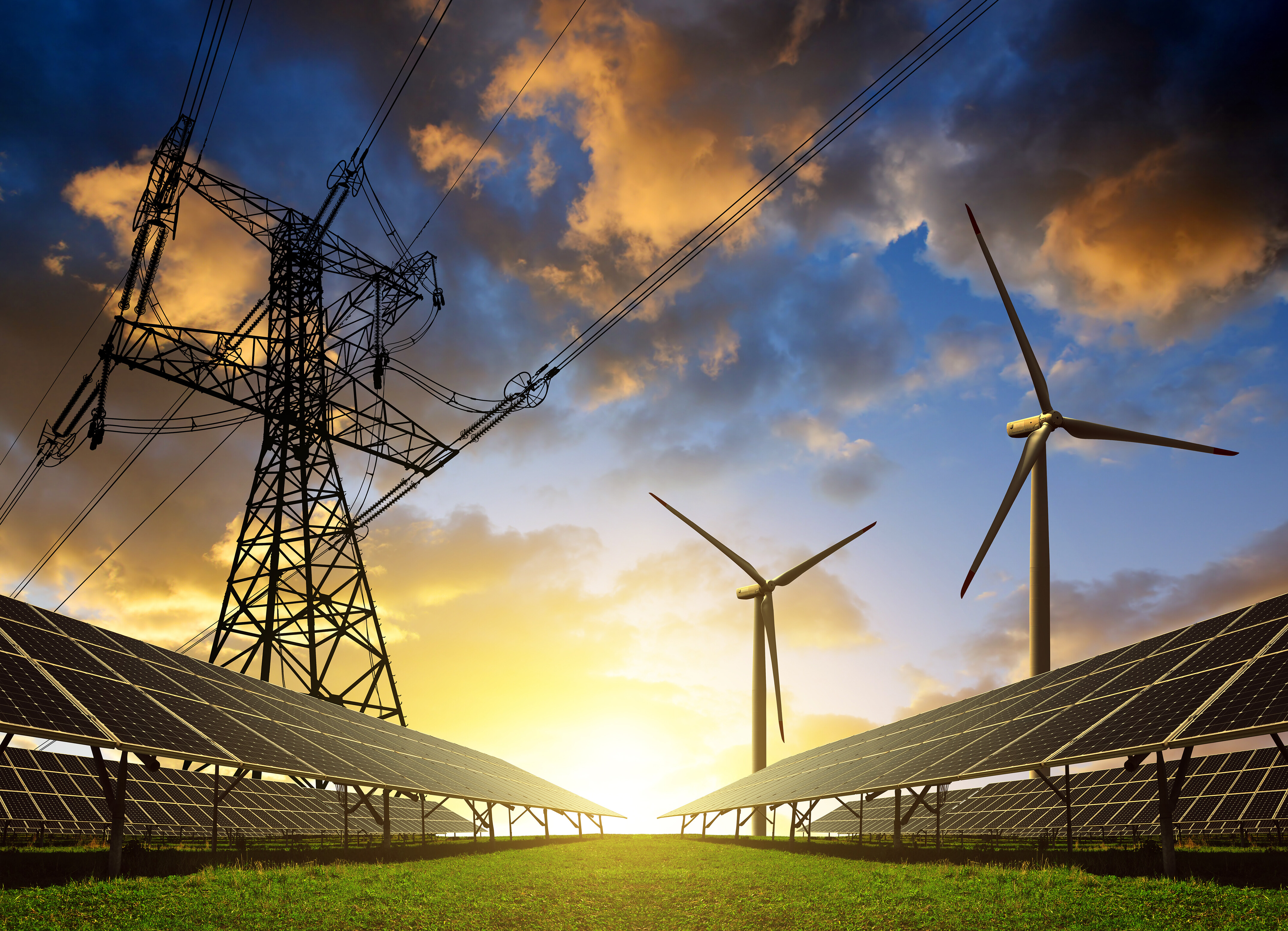We asked more than 110 investors how they plan for the unexpected. Here’s what we found out

Opportunities that deliver long-term returns. Image: Photo by Stephen Dawson on Unsplash
Maha Eltobgy
Vice-President, Resource Mobilization and Strategic Partnerships, Rockefeller Foundation- From climate change, water security and demographic shifts to geopolitics, low and negative real long-term interest rates and technological evolution: institutional investors must respond and plan for the unexpected.
- But for many asset owners who want to rise to these challenges, the best practices of advanced investors are difficult to track, and ways to benchmark progress relative to peers are limited.
- Approaches include but are not limited to: investment products related to the trends; selective divestment; self-assessment frameworks; measurement tools; corporate engagement; peer collaboration; and solid strategic vision and governance frameworks.
Our economy, society and planet are facing many long-term systemic risks. From climate change, water security and demographic shifts to geopolitics, low and negative real long-term interest rates and technological evolution – institutional investors must respond to these challenges – and plan for the unexpected.
Rather than wait for these trends to become emergencies, investors who begin to tackle them now can start to mitigate the risks they pose to their portfolios and explore ways to capture opportunities that deliver long-term returns.
As a bonus – for both their beneficiaries and portfolios – adopting these investment practices should in turn, help build a more resilient economy, which considers the future needs of the environment and society in tandem.
While it sounds straightforward, there is a significant obstacle: Many asset owners are not aware of how they compare to peers with respect to integrating the trends. This is where investors who wish to progress from “developing” to “advanced” require a benchmarking framework to identify gaps and areas for improvement.
For many asset owners, the willingness to change and advance is there – but the best practices of advanced investors are not obvious, and measurement tools are limited.
Investors know there are issues to tackle – the challenge is how to do it?
Over the past two years, the World Economic Forum’s research, in collaboration with Mercer, identified six critical risks that sovereign wealth funds, pension plans, endowments, foundations and insurers are most concerned about over the long-term.
In our 2020 survey of more than 30 asset owners, representing over $3.4 trillion in total assets, the top three trends for investors were climate change, low and negative interest rates, and technological evolution.
Amid the pandemic, many governments and businesses across the globe have made commitments to rebuild the economy in a sustainable way, which means addressing and adapting to climate-change risks to protect both the environment and society.
Meanwhile, the pandemic has propelled central banks and governments to act together to promote economic stability resulting in expectations of continued low or even negative real long-term interest rates.
Our research shows that investors are also concerned about water security, geopolitics and demographic shifts (both ageing populations and the working age population growth in Africa and South Asia.) If not well managed, these trends will compound the resulting instability globally, as we see more inequality, populism, protectionism, threats to free trade and natural catastrophes. Investors know there are issues to tackle – the challenge is how to do it?
There’s no single way to measure how investors are progressing on ESG and other metrics
To mitigate the major risks that investors face from these systemic trends, institutional investors need to scrutinize, adapt and protect their portfolios as well as capture opportunities to pursue attractive risk-adjusted returns. Yet, our research shows that many institutional investors have made only some or limited progress on most of these systemic trends.
Many investors also lack self-awareness of where they are in their vision, governance and implementation journeys, believing they are a lot more advanced than they really are – especially compared to peers.
For example, many believed they were making great progress on tackling climate change’s risks because they had a responsible investment policy. Yet often the policy was not specific enough from an investment or metrics-tracking perspective to enable implementation, and remuneration was not aligned with the policy’s goals.
As a result, many investment teams were not motivated to evolve their sourcing process or feel accountable to update the policy to make it more actionable.
Advanced asset owners, however, have put in the effort required to integrate the global systemic trends into their strategic decision-making processes, adapting their vision, governance and implementation practices to account for goals, beliefs and stakeholders’ feedback.
From a top-down perspective, senior leadership at advanced asset owners have generally evolved their investment and governance policies to successfully integrate the trends. Bottom-up, advanced asset owners have investment teams that understand the systemic trends and possess the appropriate guidance, incentives and resources to identify and invest into relevant opportunities.
After conducting more than 180 interviews with members of the investment community over the past ten months, it became clear there was no single way to systematically and comparatively measure how investors are progressing on ESG and other metrics – so we created solutions.
3 ways to become an advanced investor
1. Measure progress
The World Economic Forum and Mercer have developed a framework that enables investors to measure their progress on the key thematic trends we identified in our research and see how they are progressing relative to peers.
Investors can use the framework and case studies to ask themselves: “Are we in development mode in addressing these systemic trends? What can we do to be more like the investors that are leading the way?”
Self-assessment will enable investors to be more proactive in addressing these trends, and, importantly, have visibility into areas in which they can amend their approaches to align with best practices and be in a better position to plan for the unexpected.
Any type of asset owner can use this framework. Advanced asset owners say they will use it to address a myriad of elements they may not have considered.
Even for smaller investors, the practical steps outlined are still relevant. For example, regardless of size, if an asset owner wants to become advanced it is important that its senior leadership and board agree on how the trends affect the organization’s mission, beliefs and ability to achieve investment objectives. It is also crucial that senior leadership understands their trend-related competitive strengths and weaknesses relative to peers.
2. Learn from advanced peers
We identified six traits among advanced asset owners:
- Diversity of thought: Cognitive diversity that draws on varied experiences and specialized expertise to access insightful perspectives
- Accurate self-assessment: An ability and willingness to draw from internal and external stakeholders to understand and address organizational shortcomings
- Commitment to strategic vision: A shared belief that action today on factors that affect the portfolio over the long term will result in enhanced risk-adjusted returns
- Commitment to transparency: Clear communication to stakeholders from the board and senior leadership regarding beliefs, vision and objectives so that stakeholders align and contribute towards goal fulfilment
- Culture of innovation: Development of new expertise, questioning of existing norms and exploration of emerging investment themes and processes
- Willingness to collaborate: Commitment to share best practices with peers and stakeholders so that the industry evolves more quickly, positively affecting regulations and policies
3. In the context of climate change, engage
For climate change, an emerging trend among advanced investors is engagement over negative screening and divestment. This means not completely divesting from certain sectors, such as fossil fuels, but instead pulling out of certain companies that are not taking serious actions to address the energy transition.
Having a completely green portfolio is all very well, but one investor’s actions alone will not change an entire sector. As a CIO of a large pension fund told us, “What good is a net zero portfolio when the world burns around you?”
By taking a selective approach to divestment, the investment community can effectively reward the companies that are doing the right thing. Exposures to such companies should also benefit long-term investors.
Beyond engagement, asset owners are addressing the trends through public and private investments. For instance, sustainable agriculture and renewable energy infrastructure to address climate change or robotics ETFs and cybersecurity funds to gain exposure to technological evolution. The asset owner survey identifies which products investors are considering, such as blue bonds and investments into women- and minority-owned organizations.
Define the destination
For investors to successfully respond to the long-term, global systemic risks facing the economy, society and planet, our framework can be a helpful resource to assess, plan and empower.
Having systematic plans in place to address these complex trends will enable investors to position themselves to capture opportunities as well as mitigate major risks. Accurate self-assessment and peer collaboration are crucial components of the journey. We believe that all asset owners with a culture of innovation, diversity of thought and a commitment to a strategic vision and transparency have the ability to become advanced in addressing the trends.
Learn more about the World Economic forum's work in Shaping the Future of Investing.
Don't miss any update on this topic
Create a free account and access your personalized content collection with our latest publications and analyses.
License and Republishing
World Economic Forum articles may be republished in accordance with the Creative Commons Attribution-NonCommercial-NoDerivatives 4.0 International Public License, and in accordance with our Terms of Use.
The views expressed in this article are those of the author alone and not the World Economic Forum.
Stay up to date:
Institutional Investors
Related topics:
Forum Stories newsletter
Bringing you weekly curated insights and analysis on the global issues that matter.
More on Global RisksSee all
Allison Shapira
November 14, 2025








